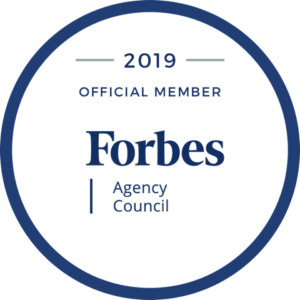You’re not special. But don’t worry, I’m not special either.
Why do I say that? Because no matter what we do – how well we prepare or how engaging we are – we will lose our audience at one point or another during our presentation. It’s just not realistic to assume that everyone in the audience will be able to hang on for every word, every slide, or even every key point of a talk.
 People check out. It’s a fact. And it’s not (necessarily) your fault. It’s the ebb and flow of the human attention span and the unavoidable distractions – both tangible (messages coming through on devices) and intangible (daydreaming, exhaustion, or randomly occurring thoughts) – that are to blame.
People check out. It’s a fact. And it’s not (necessarily) your fault. It’s the ebb and flow of the human attention span and the unavoidable distractions – both tangible (messages coming through on devices) and intangible (daydreaming, exhaustion, or randomly occurring thoughts) – that are to blame.
No matter how diligently you prepare or rehearse, it’s still not an insurance policy against audience members checking out during your presentation. As much as you plan a presentation for audiences to hear your every word, they won’t. They’ll drift off. You’re not special, and neither am I. We have to work to grab and hold their attention and we have to plan for their lapses in attention.
So, how do we do that? Below are 3 ways you can provide a helping hand to your audience members:
Be Brief
Unless your topic or audience call for a deep, thorough download, be as succinct as possible. Every time. In fact, I would advise you to think about whether people are in the room on their own free will (in which case you have some leeway) or out of obligation (in which case brevity is urgent). This will help you gauge how much time and detail you will use, and it will be better suited to your audience.
Know, don’t guess, how long your presentation is. Rehearse a few times and time yourself. This way, you’ll know if you need to make adjustments or cut some material. You’ll also be able to let your audience know what they’re in for from the start. If you can tell them how long your talk is, they’ll be better able to calibrate their own attention span – e.g. “oh, this is only 20 minutes? I can hang on for 20 minutes.”
Use Signposts
On your slides and as you are speaking, give your audience cues and clues as to where you are in your talk. Trust me, they need this. (You’ve needed it, haven’t you? Think about your own experiences sitting through presentations … I’m guessing there are at least a few instances when you would have liked some cues or clues!) Guide them.
Visually, you can help your audience by including a progress bar in your slides, so that your audience can track where you are in your presentation. Or, if you have a small deck, you can include a countdown – e.g. 1 of 12, 2 of 12, etc. Or, if you have, let’s say, three main sections that you told your audience you would be covering, you can let them know where you are by including the name or keyword for each section in the lower right corner. In fact, all of these visual cues are best situated in the lower right corner of your slides.
Verbally, you can keep your audience tracking by narrating where you are and what you’re doing. Some examples of this include: telling the audience how long your talk will be, letting them know when you’re digressing to share a relevant story, letting them know when the story is over and you’re returning to your point, alerting them whenever you’re transitioning from one section of your presentation to another, and (everyone’s favorite) announcing the conclusion.
Be Dramatic
Use the pregnant pause. Stop and stand in the middle of the stage. Animate or “act out” what you’re talking about. For example, if you say the number 4, hold up 4 fingers. Or if you say, “fast forward a few years,” roll your forearms, one over the other, to show motion. Or if you’re talking about something meaningful, touch your heart.
If “the show” moves along and there’s more to look at than just your visuals, people might hang in there with you better and longer. Before you resist and say I can’t do that, let me offer this: What might feel like theatrics to you will merely look like good delivery energy to your audience.
In a perfect world, speakers would be efficient enough with their words that audiences would be able to hang on every one of them. But as we all know, that’s not the case. Even the most efficient speakers and the best audiences have lapses – no matter how good or how special the speakers are! The best you can do to hold onto your audience’s attention is to take them by the hand and guide them through your presentation. The rest is up to them.
- New Agey Advice for Nervousness - November 3, 2022
- Your Passion Can Go a Long Way Toward Building Connection - October 10, 2022
- Keep stage fright a private matter while you’re speaking on a public stage! - August 11, 2022



